Pep Fujas Talks Joining Sweet Protection and Raising a Ski Family
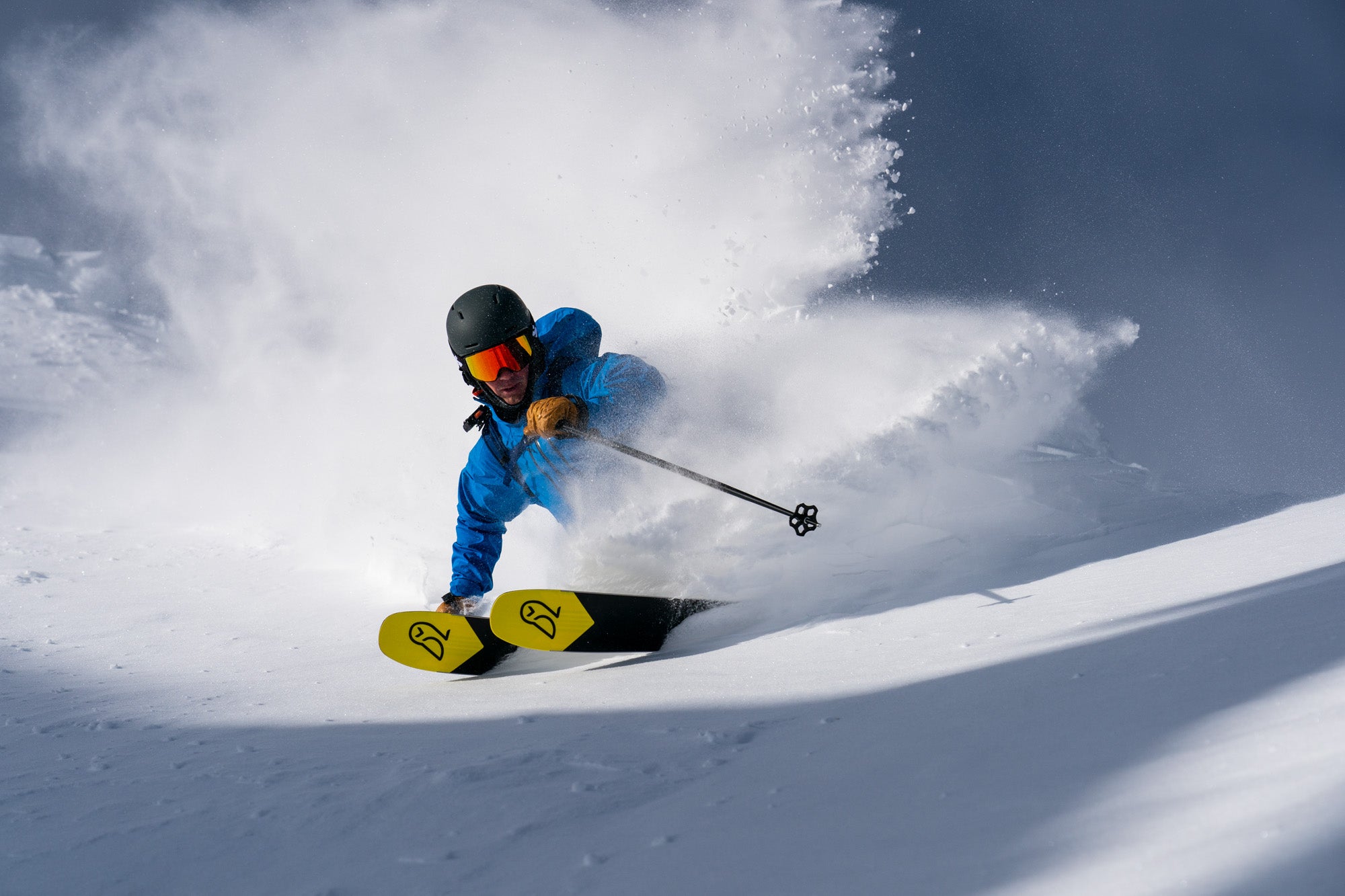
Photo credit: Adam Clark / Sweet Protection
Since the beginning of his professional skiing career, Pep Fujas’ skiing has blurred the lines between park skiing and freeride in stunning video segments and designed powder skis that still have a cult-like following. Recently, the ski community staple has made waves for changing directions—leaving longtime sponsors in favor of exploring new partnerships, including a switch from K2 to WNDR Alpine and joining the growing list of athletes on Norwegian brand Sweet Protection’s athlete team.
We caught up with Fujas while he was on a family vacation in Bansko, Bulgaria to chat about the move to Sweet, his goals with the WNDR Alpine ski company, and how life in the Little Cottonwood Canyon has changed over the past decade.
SKI: First off, congrats on joining Sweet Protection! You were with your prior eyewear sponsor for the majority of your professional skiing career, what were the reasons that motivated you to join Sweet?
Pep Fujas: Thank you, I’m excited to be a part of the Sweet Protection family. I was motivated for a number of reasons, but mainly the expert craftsmanship of their products combined with the attention to the finer sport-centric design details they apply. I was approached by Sweet at an opportune time in my life where I was battling myself to wear a helmet. I was a fairly new father and was starting my daughter out on skis, with a helmet. I’d wear one occasionally when the environment and conditions warranted one.
You might ask, “why don’t all conditions warrant a helmet?” Well, let me break this down. The vast majority of participants in skiing wear helmets yet the majority of the professionals do not, which seems a bit strange right? Helmets are typically cumbersome and they don’t fit well. They tend to limit your senses by covering your ears. Yes, you can take them out but then you need to wear a balaclava or hat underneath, which requires you to size up, which adds weight and also looks pretty obnoxious. When you take a lot of impact, which professional skiers do on a regular basis, having a helmet on increases the stress on your neck.
Another reason—which I highly respect and have used in my defense of not wearing a helmet—is the idea that you will do things and take chances that you normally would not because of the security you feel by wearing a helmet. If you find yourself in a place where you say, “hmmm, I should probably be wearing a helmet right now,” then you probably should not be in that situation, right?

Anyway, there are plenty of arguments. I told Lasse, who was the [Sweet Protection] team manager at time, some of my arguments and he urged me to give their helmets a try anyway.
Lasse mentioned that Sweet makes goggles and was confident I’d like them too. He was right. They integrate into their helmets seamlessly and the clarity of their RIG technology is great for creating more contrast.
What are you most looking forward to working with Sweet? Do you have any projects in the works with them yet?
I’m really looking forward to working on integrating more eco-based materials into their products and helping them refine their environmental footprint using other means. There are some projects in the works but nothing solid enough for me to share at this time.
Related: Chris Davenport Joins Sweet Protection
Those only familiar with your video segments might recall never seeing you in a helmet. Are you planning to wear a helmet more often now that Sweet is known for both premium helmets and goggles?
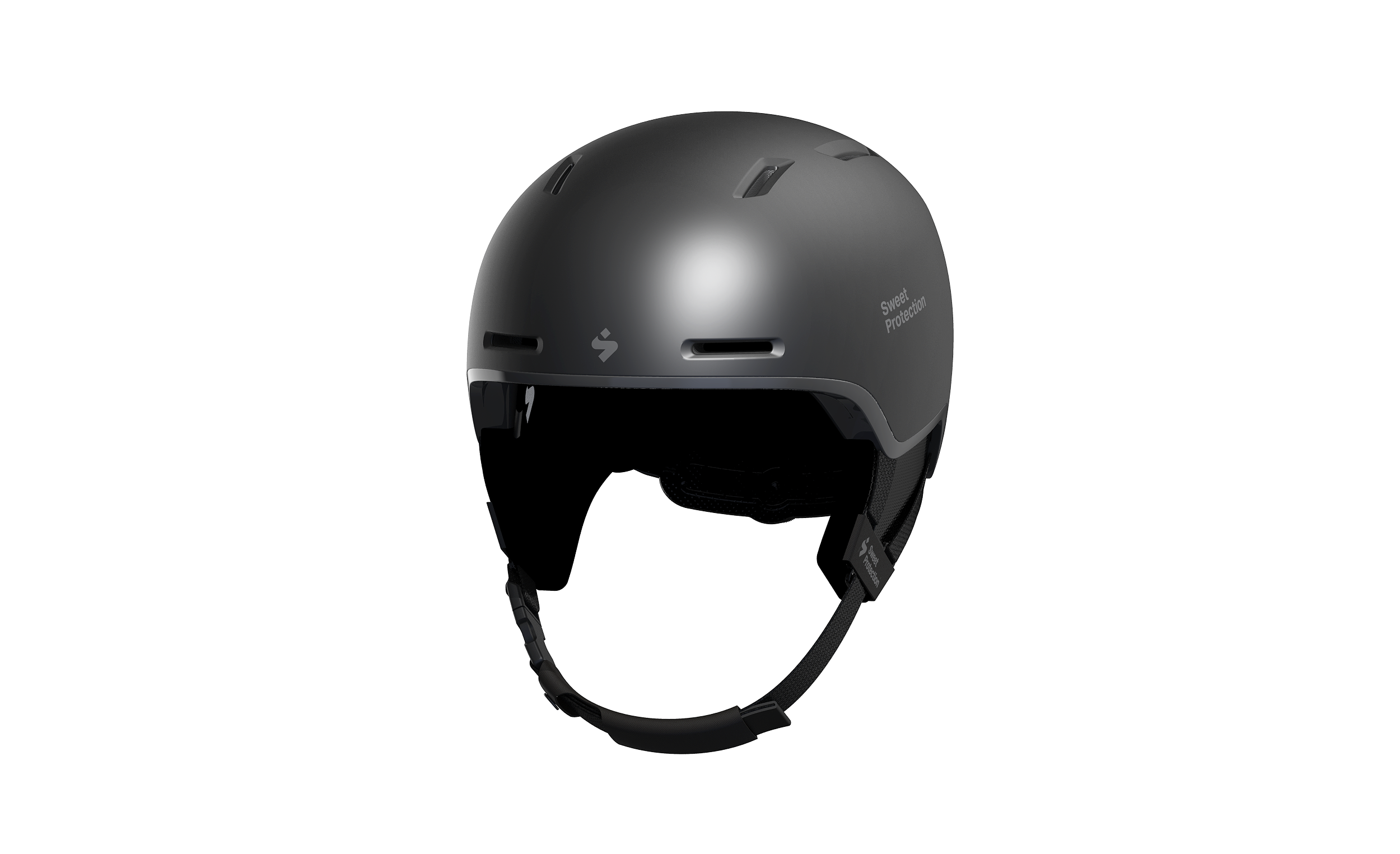
Yes, good point. I plan to wear a helmet 95% of the time I ski. Why 95%? Well, in case I forget my helmet, or it’s a retro day on 213 skinny skis. I wore Sweet helmets for about half of the season last year and realized that a lot of my arguments could be overcome by their quality craftsmanship. All models of Sweet helmets are shaped well, light and are equipped with easily customizable adjustments and intuitive features all the way from their top of the line Switcher to their entry-level Looper model. I’ve actually been wearing the Looper helmet more often than the Switcher helmet.
You also recently changed from a longtime ski sponsor to a VP/athlete role at a new company. What’s up with your new gig with Matt Sterbenz at WNDR? Also, is it pronounced Wonder? Wander? Winder? Help us out here…
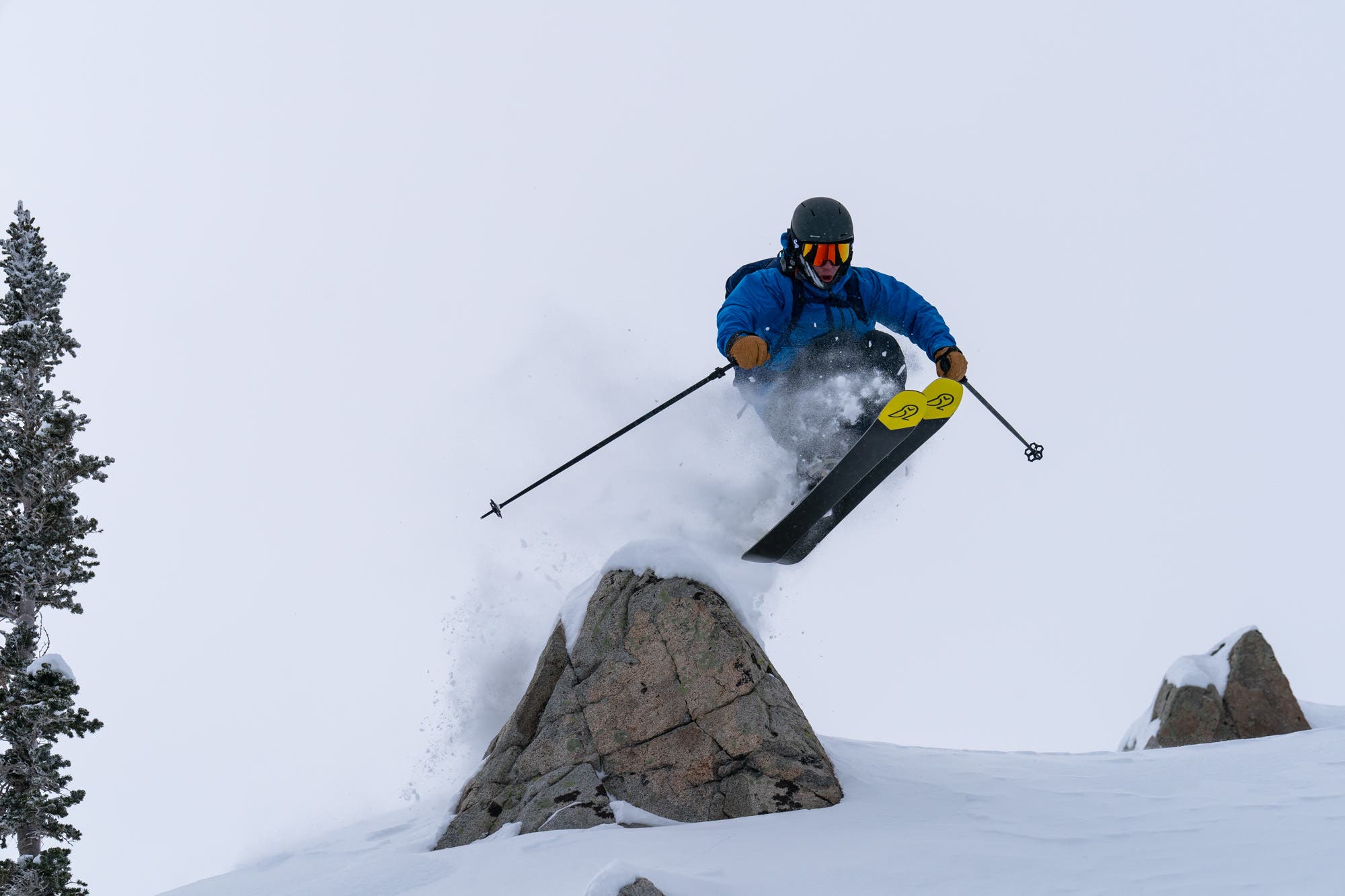
As for my role at WNDR Alpine, I couldn’t be happier, despite the enormity of the undertaking. I get to help form the brand, company, and product from the ground up. It’s certainly not an easy endeavor in a crowded space, but I feel the company is poised to be a leader in the industry by being able to take on some of the problems in ski design and manufacturing. Those problems include material innovation, waste stream responsibility, production process efficiency, and fulfillment methods.
Being a small brand backed by an eco-based material innovation company gives us a lot of leverage to start off on the right foot. We are currently designing eco-based materials specifically tailored for skiing. There isn’t one other ski or snowboard company that can stand on that value proposition. Everyone has been forced to use materials designed for other industrial applications. It’s been a wild change and has put me behind a desk where I have the balance of productively putting my brain to use for the potential good of, not only the ski industry but for other industries, while also allowing me to pursue my skiing passions. It also gives me another motive to wear a helmet and protect my most valuable asset.
Athlete News: Shiffrin Joins Adidas, Fujas Leaves K2
How is your graduate degree at the U coming along? When we last spoke, you were looking to find a position at a company that allowed you to make an environmental impact through business. Are you finding that at WNDR?
It’s coming. I’m over three-quarters of the way through, but given my job, family and our affinity for traveling, the light at the end of the tunnel still seems pretty far away. As for being a part of a forward-thinking company that has serious potential to not only make an environmental impact but make a far-reaching positive environmental impact, that dream has been fully realized.
Read More: Life Beyond Pro
Internally at WNDR Alpine we are trying to think of the whole process and are taking strides to re-use or re-purpose the waste we create through our production process. To elucidate the waste problem, here is a general guide; the skis you see on your feet are only 50% of the materials used to create those skis. There are other ways we are tackling our footprint. One is by shipping via UPS carbon offset, wrapping our skis in paper instead of plastic, using post-consumer and recyclable tape, custom-sized boxes, and we even re-use the rubber bands that come with our skins. We will also take back our skis at the end of their useful life and deal with them responsibly either by refurbishing them, re-purposing them or disposing of them appropriately. I’d like to help spread these waste savings concepts and responsibility goals to all of the brands I work with. Sweet has been very open to these ideas and I’m hoping to influence them to work on integrating more eco-based products and environmentally friendly processes.
Considering your endless video segments all over the world, countless product influences, and building a family, what has been the most challenging thing you’ve faced over the course of your professional skiing career?
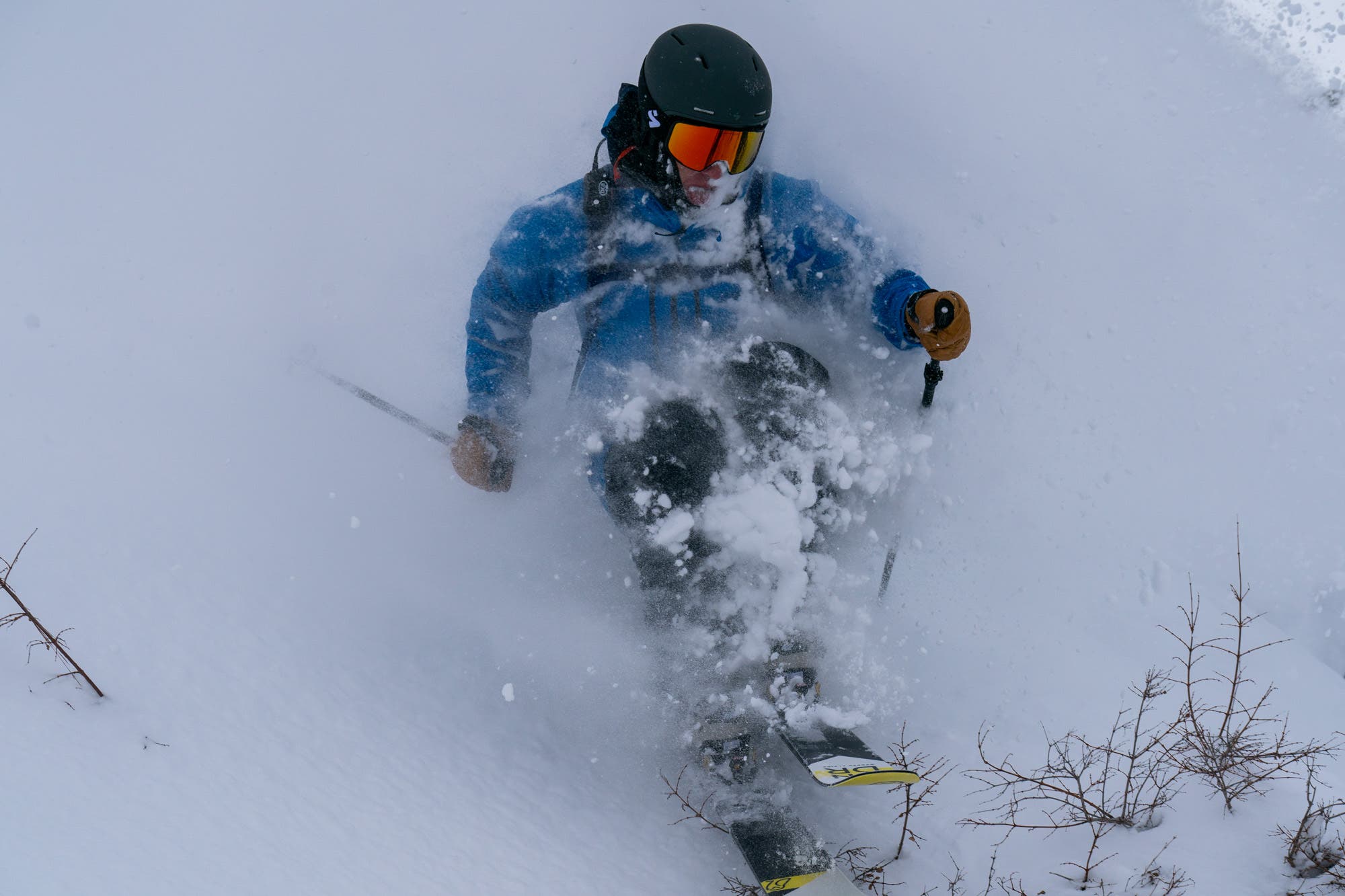
This past summer was by far the most challenging. I was doing the ultimate juggling act, taking full-time classes at the University of Utah, traveling back to Oregon for two weeks out of every month during summer months working as operations manager at my mom’s sauce manufacturing company, keeping my foot in the door with my ski career, navigating the potential path at WNDR Alpine, exercising, and enjoying/maintaining family time when I could. Thinking back on it all, I’m surprised I survived.
After the release of “Fire on the Mountain” and “Drawn From Here,” are you inspired to do some sort of big movie project in the future?
Honestly. No. I think both Chris [Benchetler] and Eric [Pollard] are now half silverbacks after this year, if not full. I still like my brown. I loved their projects and respect them both for taking on such big undertakings, but I’d rather not take on another full-time job.
Watch: Fire on the Mountain and Drawn From Here
How has your perspective of skiing changed now that you have two kids on snow learning to ski?
One realization is that green slopes are actually really hard. It hit me suddenly when I looked at skiing from my then 2-year-old daughter’s perspective, which is when skiers don’t have a sense of control.
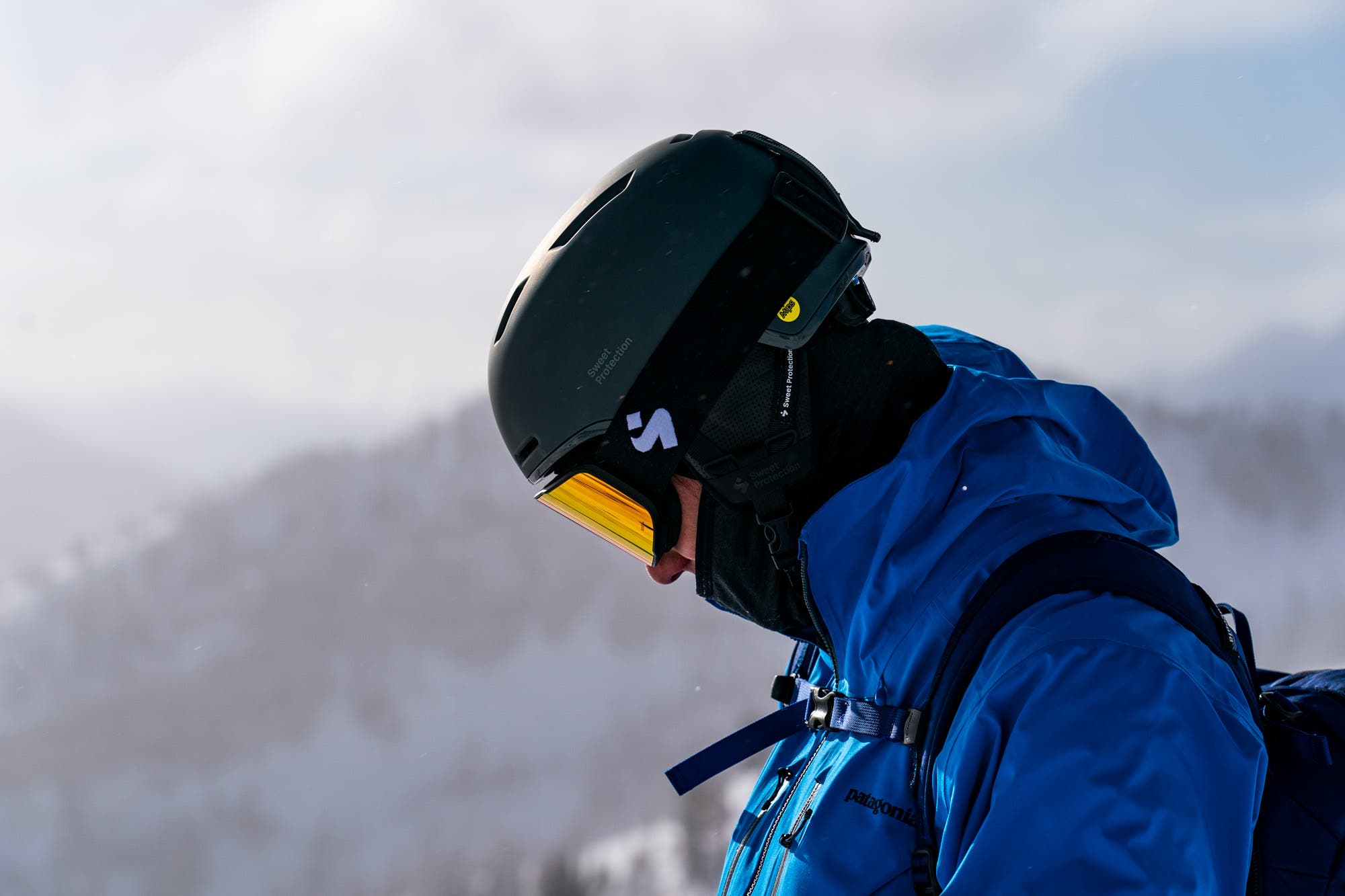
She was getting the hang of turning and obeying our commands when we’d say “turn left” or “turn right.” We were on a fairly innocuous slope, and a friend of mine was also there with his 2-year-old daughter. My daughter and I had skied a few runs that day out of the harness, and we had gotten ahead of our friends. I instructed Zoe to stop and she did. I turned around to see where David and Ash were, and once I caught sight of them, I turned back to call out my findings to Zoe. She didn’t respond but was stationary, so I looked back up towards them and was watching them approach. David had his attention on Ash, but when he looked up, I could see the shock in his eyes as he shouted for Zoe.
I turned around to see Zoe straight-lining towards an elbow in the run that intersects with a cat track with a mandatory right turn. Past the edge of the cat track, there is a rope, a steep slope and a wall of pine trees. There was also a group of beginner skiers cruising left to right, which I now believed she was going to t-bone straight into. I yelled Zoe “TURN! TURN!” As she split the skiers through a stroke of good timing, visions of her launching off of the cat track, picking up her mangled remains out of the pine trees and me having to explain to my wife what happened followed immediately after she passed the other beginners. Maybe running into the other skiers would have been a safer alternative.
Tips for getting your kids on snow: 3 Tools to Help Young Skiers Learn
You’ve been one of the most recognizable skiers in Little Cottonwood Canyon (LCC) for years. Now it’s more crowded than ever with no signs of slowing down. What do you foresee is the future of the canyon?
Oh man, that is the question of the decade. Actually, this year hasn’t been super crowded. This past weekend I didn’t wait in a single line at Alta. On the other hand, the road to access the mountains and the lack of parking or adequate alternative transportation is a huge problem.
At this stage I foresee nothing happening in the near future. UDOT announced they are increasing the number of busses this year, up approximately 25% in both canyons, but the ride-share lot at the base of LCC has now been turned into an employee lot. Busses no longer stop there and no alternative parking area has been made. Ironically, funding for this bus initiative came from the Central Wasatch Commission, Save Our Canyons and Wasatch Backcountry Alliance, but it does not solve the problem.
There are solutions and there have been for years but no one is willing to pay for it or make the necessary sacrifices. I’ve seen plans for gondolas and talks of widening the road, putting up avalanche tunnels, and other options, but nobody can agree on what to do. I’d personally like to see infrastructure and rules put in place so only carpools and busses are allowed to drive up and down the road and gondolas, funitels or other mechanized transport for everyone else from a couple of common lots.
My wife had a great suggestion that they put in a ski run that goes all the way back down to the entrance. Then they could promote the longest run in the Northern Hemisphere and you could avoid the traffic.
A buddy of mine wants to know: Will we ever see the footage of you and Andy on Hellbents and no poles at the X-Games?
Apparently, it exists on a Newschoolers thread, but I haven’t seen it. It’s probably worth a good laugh.
Anything else you’d like to add?
It’s so easy to get complacent, jaded or downright pessimistic about the state of our world whether politically, environmentally or socially. I have certainly discovered a newfound optimism in the companies I have chosen to align with because of their willingness to take incremental steps to make a difference.
More Athlete Interviews:
Tatum Monod
Cody Townsend
Caroline Gleich